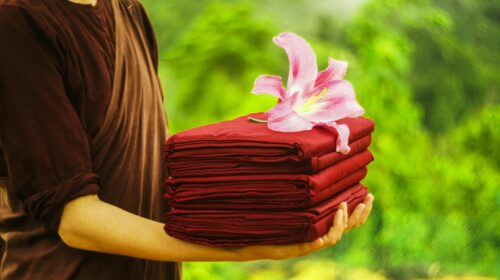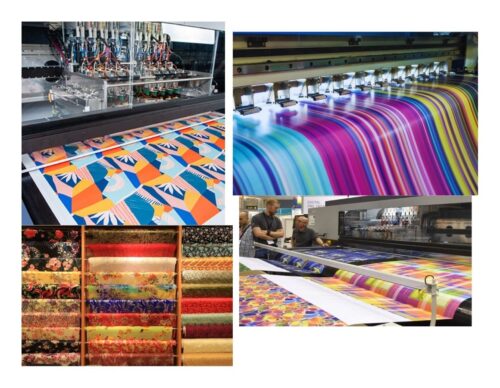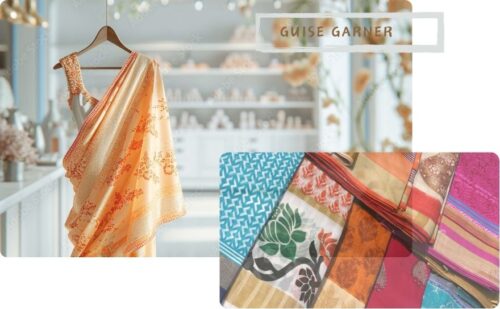Home Decor Textile: Elevate Your Living Spaces with Style and Comfort
“Home is where our story begins, and with every carefully chosen piece of decor, we write chapters of comfort, style, and cherished memories.”

Introduction
When it comes to creating a beautiful and inviting home, one cannot underestimate the power of home decor textile. From upholstery and drapery to bedding and rugs, the right choice of textiles can transform any living space into a haven of style and comfort. In this article, we will explore the world of home decor textile info and discover how it can elevate your home’s aesthetic appeal.
The Importance of Home Decor Textile
Home decor textile plays a vital role in interior design. It not only adds visual interest but also enhances the functionality and comfort of your living spaces. Whether you’re looking to revamp your entire home or simply refresh a room, incorporating the right textiles can make a significant difference. From softening hard surfaces to adding warmth and texture, home decor textile allows you to personalize your space and create an atmosphere that reflects your unique style.
How to self style
To self-style your home, follow these steps. First, define your preferred style and gather inspiration. Choose a color palette that sets the desired mood. Assess your furniture and arrange it for optimal functionality. Pay attention to lighting by incorporating natural light and various fixtures. Select textiles and accessories that add texture and personality. Display sentimental items for a personalized touch. Keep your space clutter-free and organized. Add finishing touches such as candles and decorative accents. Enjoy the process of transforming your home into a reflection of your style and make it a comfortable and inviting space. Read full story….
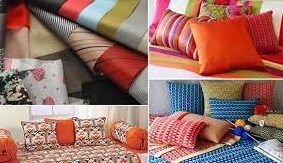
Choosing the Right Fabrics
Understanding Fabric Types
When selecting home decor textiles, it’s crucial to consider the different fabric types available. Common options include cotton, linen, silk, wool, and synthetic materials like polyester. Each fabric has its own characteristics, such as breathability, durability, and texture. Understanding these attributes will help you make informed decisions when choosing textiles for specific purposes.
Here is a comprehensive list of textiles commonly used for home decor:
- Cotton
- Linen
- Silk
- Wool
- Velvet
- Satin
- Jacquard
- Chenille
- Faux Fur
- Polyester
- Rayon
- Acrylic
- Jute
- Suede
- Microfiber
- Organza
- Chiffon
- Brocade
- Canvas
- Tweed
- Denim
- Lace
- Taffeta
- Felt
- Hemp
- Mohair
- Seersucker
- Gingham
- Damask
- Voile
These textiles offer a wide range of textures, patterns, and colors to choose from, allowing homeowners to create unique and personalized home decor that suits their style and preferences.
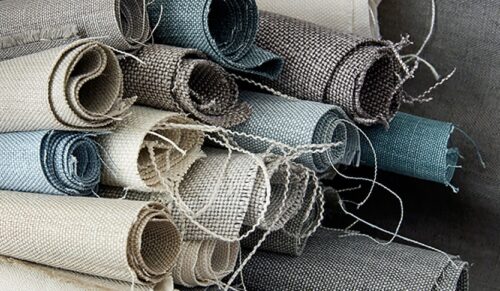
Here is a list of various home decor textiles:
- Upholstery Fabrics
- Drapery Fabrics
- Bedding Materials (Sheets, Duvet Covers, Pillowcases)
- Throw Pillows
- Decorative Cushions
- Rugs
- Carpets
- Curtains
- Window Treatments
- Tablecloths
- Table Runners
- Napkins
- Placemats
- Chair Covers
- Slipcovers
- Blankets
- Throws
- Quilts
- Bedspreads
- Towels (Bath, Hand, and Kitchen)
- Shower Curtains
- Upholstered Headboards
- Pillow Shams
- Roman Shades
- Valances
- Wall Hangings
- Fabric Room Dividers
- Fabric Wall Coverings
- Canopy Fabrics
- Outdoor Cushions
These are just some examples of home decor textiles that can be used to enhance the visual appeal and comfort of different areas in a home.

Considering Durability and Maintenance
In high-traffic areas of your home, such as the living room or dining room, durability becomes a significant factor. Look for fabrics that can withstand regular use and are easy to clean. On the other hand, for areas with less foot traffic, you can prioritize more delicate and luxurious textiles that require extra care.
Exploring Textile Patterns and Colors
Textile patterns and colors play a vital role in creating visual interest and harmony within your home. Whether you prefer bold prints or subtle designs, consider how they will complement your existing decor and overall color scheme. Mixing patterns and colors can add depth and personality to your space, but remember to strike a balance to avoid overwhelming the eye.
Upholstery and Drapery Options
Transforming Your Furniture with Upholstery
Upholstery is an excellent way to breathe new life into old furniture or give a fresh look to new pieces. From sofas and chairs to ottomans and headboards, there are endless possibilities for upholstery. Choose fabrics that not only match your style but are also practical for the intended use. For example, if you have children or pets, opt for stain-resistant and durable materials.
Enhancing Windows with Beautiful Drapery
Drapery adds elegance and sophistication to any room while providing privacy and light control. When selecting drapery, consider the fabric’s weight, opacity, and drape. Thicker fabrics like velvet or jacquard can add a touch of luxury, while sheer fabrics like chiffon or organza allow natural light to filter through. Don’t forget to choose drapery hardware that complements the overall aesthetic.
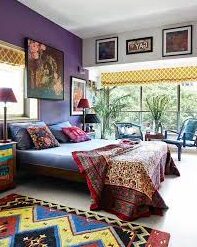
Bedding and Linens for a Luxurious Bedroom
Selecting the Perfect Bedding
Your bedroom should be a sanctuary of comfort, and selecting the right bedding is key to achieving that. Invest in high-quality sheets, duvet covers, and pillowcases that feel soft against your skin. Consider the thread count, fabric type, and weave to ensure a comfortable and restful sleep experience.
Creating a Cozy Atmosphere with Linens
Linens, such as throws, blankets, and decorative pillows, add warmth and coziness to your bedroom and living spaces. Play with different textures, colors, and patterns to create layers of visual interest. Mix and match different fabrics to achieve a stylish and inviting look.
Rugs and Carpets: Adding Warmth and Style
Choosing the Right Rug or Carpet Material
Rugs and carpets not only provide comfort underfoot but also anchor the room and tie the elements together. Natural fibers like wool or jute bring warmth and texture, while synthetic materials offer durability and ease of maintenance. Consider the room’s function and traffic to determine the appropriate material.
Selecting the Appropriate Size and Design
The size and design of rugs and carpets significantly impact the visual impact of a room. Larger rugs can make a space feel more expansive, while smaller ones can define specific areas. Choose patterns and colors that complement the overall decor while adding visual interest without overwhelming the space.
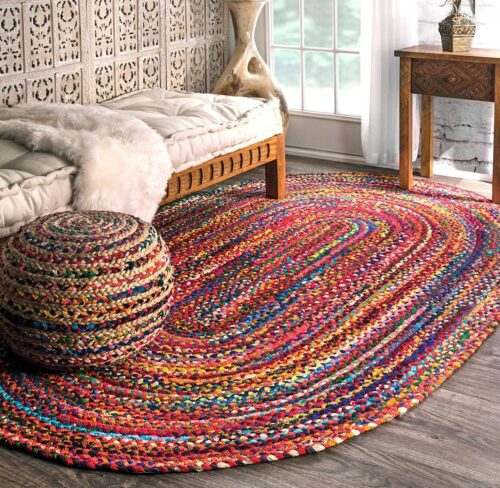
The Impact of Home Decor Textile on Ambiance
Home decor textile has a profound influence on the ambiance of your living spaces. Whether you desire a cozy, rustic feel or a sleek, modern aesthetic, the choice of textiles sets the tone. Soft, plush fabrics create a sense of comfort, while smooth, crisp materials exude sophistication. By carefully selecting home decor textiles, you can create the desired atmosphere that resonates with your personal style.
Mixing and Matching Textiles for a Unique Look
Don’t be afraid to experiment with different textiles and patterns to achieve a unique and personalized look. Mix bold prints with solid colors, and combine different textures to create depth and visual interest. Remember to strike a balance and ensure that each element complements the others to achieve a cohesive and harmonious result.
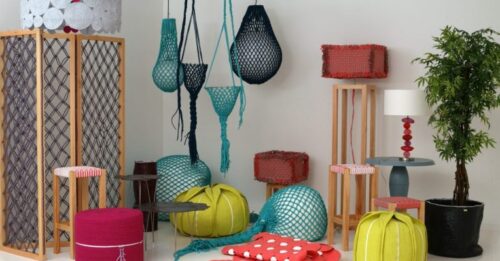
Sustainable and Eco-Friendly Textile Options
As awareness of environmental issues grows, many homeowners are turning to sustainable and eco-friendly textile options. Look for fabrics made from organic or recycled materials, as well as those produced using environmentally friendly manufacturing processes. Choosing sustainable textiles not only benefits the planet but also promotes healthier living environments.
Textile Care and Maintenance Tips
To prolong the life of your home decor textiles, proper care and maintenance are essential. Follow the manufacturer’s instructions for cleaning and washing each fabric. Regularly vacuum rugs and carpets to remove dirt and debris. Use mild detergents and avoid harsh chemicals that can damage the fibers. By taking care of your textiles, you ensure they retain their beauty and functionality for years to come.
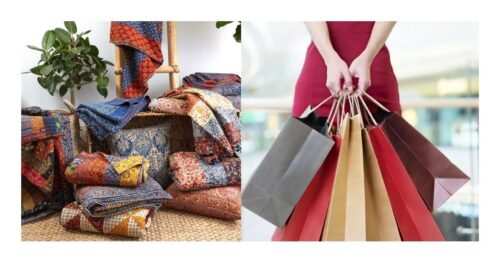
Where To Shop- Top Brands
When it comes to shopping for home decor, there is an array of exceptional brands that offer an extensive selection of products to elevate your living space; from the timeless to affordable designs.
As India is Renowned for his Art culture, here are some top Indian brands known for their home decor products:
- FabIndia
- Home Centre
- Urban Ladder
- Pepperfry
- Chumbak
- Good Earth
- Jaypore
- India Circus
- The Bombay Store
- Jaipur Rugs
- Portico New York
- D’Decor
- Sarita Handa
- Krsnaa Mehta
- Maspar
- Asian Paints (known for paints and wallpapers)
- Godrej Interio
- House of Ekam
- Tranceforme
- Elvy
These Indian brands offer a wide range of home decor products, including furniture, textiles, rugs, curtains, lighting, and accessories. They showcase the rich cultural heritage of India through their designs and craftsmanship, providing options to suit various styles and preferences.
Here is a list of top international brands known for their home decor products:
- IKEA (Sweden)
- Zara Home (Spain)
- H&M Home (Sweden)
- Pottery Barn (United States)
- West Elm (United States)
- Anthropologie (United States)
- Crate and Barrel (United States)
- Restoration Hardware (United States)
- HomeGoods (United States)
- Williams-Sonoma (United States)
- The White Company (United Kingdom)
- Laura Ashley (United Kingdom)
- Habitat (United Kingdom)
- Marks & Spencer (United Kingdom)
- John Lewis & Partners (United Kingdom)
- Maisons du Monde (France)
- Leroy Merlin (France)
- Alessi (Italy)
- Kartell (Italy)
- Muji (Japan)
These brands offer a wide range of home decor products, including furniture, textiles, lighting, accessories, and more, catering to various styles and preferences.

Conclusion
Home decor textile has the power to transform your living spaces into inviting, stylish, and comfortable havens. By carefully choosing fabrics for upholstery, drapery, bedding, rugs, and carpets, you can create a personalized atmosphere that reflects your unique style. Don’t forget to consider durability, maintenance, patterns, and colors when making your selections. With proper care and attention, your home decor textiles will continue to enhance your living spaces for years to come.
FAQs
Q: Where can I find unique and high-quality home decor textiles?
A: There are various options available, both online and in physical stores. Consider exploring specialty home decor stores, artisan markets, or reputable online retailers that offer a wide range of textiles.
Q: How often should I change my home decor textiles?
A: It depends on personal preference and the condition of the textiles. However, updating your textiles periodically can breathe new life into your living spaces and keep up with changing trends.
Q:What are some tips for mixing patterns and colors effectively?
A: Start by selecting a dominant pattern or color and then build around it with complementary or contrasting elements. Use a mix of scales and textures to add visual interest while ensuring cohesion.
Q: Are there any specific guidelines for choosing rugs and carpets for different rooms?
A: In high-traffic areas, opt for durable and stain-resistant materials. For bedrooms and cozy spaces, prioritize comfort and softness. Consider the size of the room and furniture arrangement when selecting the appropriate rug or carpet size.
Q: How can I make my home decor textiles more sustainable?
A: Look for textiles made from organic or recycled materials. Support brands that prioritize sustainable and eco-friendly manufacturing processes. Additionally, consider upcycling or repurposing old textiles to reduce waste.

